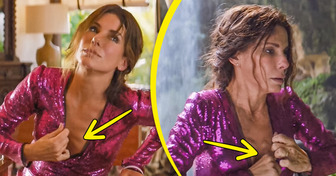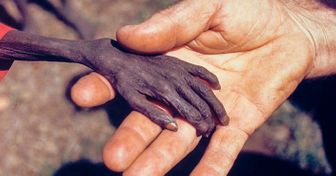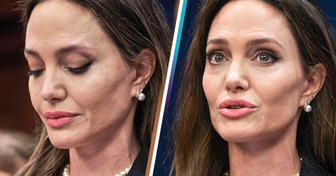20 Pictures That Capture the Adventures Almost Every Mom Has to Deal With Every Day

The movie, Hidden Figures, which was released in 2016, tells the story of 3 female mathematicians who were the talent and brains behind great achievements made by the US space program. The main characters, portrayed by actresses Taraji P. Henson, Octavia Spencer, and Janelle Monáe, went a long way to prove that professionalism and striving for higher goals can overcome all possible barriers.
We at Bright Side took a closer look at the real stories behind the main characters of Hidden Figures, and here’s what we found out about these 3 amazing women.
Katherine Johnson (née Coleman) was born on August 26, 1918, in West Virginia, and was the youngest of 4 kids. Her mother was a teacher, and her father worked as a farmer and a handyman. Since early childhood, Johnson demonstrated strong skills in mathematics. When Johnson was 10 years old, she enrolled in a high school located on the campus of West Virginia State College, and later she enrolled in the college itself. In 1937, she graduated with the highest honors and a Ph.D. in mathematics before going on to teach kids in a public school in Virginia.
In 1939, she was chosen to be part of the West Virginia University graduate math program and became the first African-American woman to participate in it. Soon, however, she quit to start a family with her husband, James Goble. When her 3 daughters got older, she came back to teaching. In 1952, Johnson learned that there was a position at the National Advisory Committee for Aeronautics (also known as NACA) at the Langley Laboratory, which was headed by Dorothy Vaughan. Johnson pursued this precious opportunity and started her work in the laboratory in 1953.
While working in the laboratory, Johnson had the chance to take part in a number of groundbreaking projects for which she provided the math. She worked on the trajectory analysis for America’s first human spaceflight and co-authored research reports. In 1962, when NASA was working on John Glenn’s orbital mission, she was invited to “manually” check the math data programmed into computers that were supposed to control the capsule trajectory. Glenn reportedly said, “If she says they’re good, then I’m ready to go.” That flight was a success, and Johnson and her colleagues contributed greatly to it.
Katherine Johnson had 3 daughters, 6 grandchildren, and 11 great-grandchildren. With her trailblazing career in science and technology, Johnson inspired her grandchildren and students to build careers in this field.
Johnson died at the age of 101 on February 24, 2020.
Dorothy Vaughan (née Johnson) was born on September 21, 1910, in Kansas City, Missouri. In 1925, she graduated from high school and received a scholarship to attend Wilberforce University in Ohio. In 1929, Vaughan graduated from the university with a B.A. in mathematics, and in 1932, she married Howard Vaughan, with whom she had 6 children. She was seen as a woman with high mathematical ability and great intellect.
Like Katherine Johnson, Dorothy Vaughan was a teacher for some time, but in 1943 she joined the Langley Memorial Aeronautical Laboratory. Vaughan worked on a team of all-black female mathematicians. Initially, they had to use separate bathrooms and dining facilities. But things changed with time. In 1949, Vaughan became the first African-American to lead the group of NACA researchers and was one of just a few female supervisors in the organization.
Apart from her work as a “human computer,” Vaughan was an advocate for women’s rights in West Computing where she worked, and she stood up for the rights of different female employees, including white workers. Vaughan was recognized for her knowledge and expertise, and for all her efforts to create equal opportunities for all employees.
In 1958, segregated facilities were banned, and together with her colleagues, Vaughan joined the Analysis and Computation Division, which was an integrated team of researchers, free from gender and racial barriers. Her work helped other researchers build successful careers in engineering and computing, including Katherine Johnson and Mary Jackson.
Vaughan retired from NASA at the age of 61 in 1971. In the final years of her career, she worked together with Mary Jackson and Katherine Johnson on John Glenn’s mission. She died at the age of 98 on November 10, 2008.
Mary Jackson (née Winston) was born on April 9, 1921, in Hampton, Virginia. In 1942, she graduated from Hampton University with bachelor’s degrees in math and physical sciences. In 1944, she married Levi Jackson, with whom she had 2 children.
After graduation, Jackson worked as a math teacher and then changed a few more jobs before she finally joined the Langley Memorial Aeronautical Laboratory in 1951. While working in the laboratory, she became an author and co-author of a number of research reports. However, she “hit the glass ceiling” and left engineering in 1979. Later, she worked as the Langley Federal Women’s Program’s manager, where she attempted to improve the promotion of female mathematicians and engineers in the industry.
In 1985, Jackson retired. She received a number of awards and honors, including the Apollo Group Achievement Award and the Langley Research Center Volunteer of the Year.
Mary Jackson died at the age of 83 on February 11, 2005.
Together with other researchers, Johnson, Vaughan, and Jackson made one of the most ambitious NASA missions of those times possible. These talented women were not just brilliant engineers and mathematicians, but trailblazers for other female and African-American specialists in the industry. Throughout their careers, they had to fight against gender and racial prejudices and stood for equal rights for everyone.
In 2017, Katherine Johnson appeared on stage during the Academy Awards ceremony, side by side with the actors of Hidden Figures. The woman whose selfless and challenging work inspired the movie received a standing ovation from the audience.
When asked about what she thought of the movie in an interview, Johnson said, “It was well-done. The 3 leading ladies did an excellent job portraying us.” She also shared a piece of advice for young women who dream of building a career in science and engineering. “Just do it. Take all the courses in your curriculum. Do the research. Ask questions. Find someone doing what you are interested in! Be curious!”
Have you watched Hidden Figures? What impressed you the most about this story and why?











